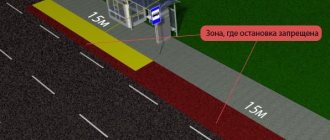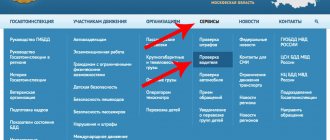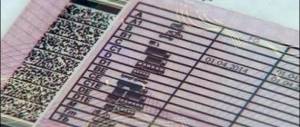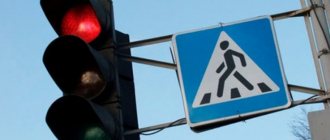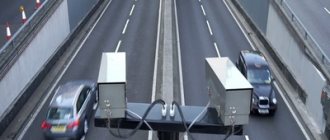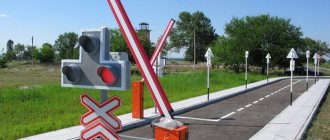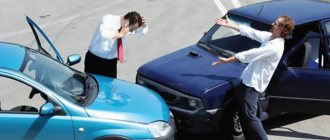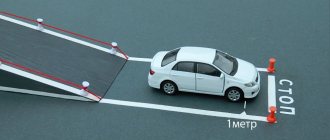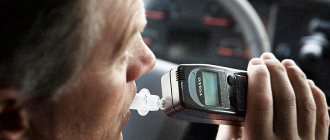Visual traffic control symbols may be installed for a limited period. They differ from stationary ones in appearance, but sometimes drivers confuse the temporary sign with the permanent one located on the yellow-green board. In addition, many are confident that they will not face anything for ignoring the requirements of the current limited-term symbol.
Read about what temporary road signs are, where and how they are installed, as well as the rules they dictate.
Temporary road signs in traffic regulations and their features
The traffic rules stipulate that the following symbols can be valid for a limited period:
- 1.8, notifying that traffic is regulated by a traffic light;
- 1.15, installed on slippery surfaces;
- 1.16, informing about uneven roads;
- 1.18, warning about the release of gravel under the wheels of the car;
- 1.20.1-1.20.3, installed before the narrowing of the web;
- 1.21, notifying about the establishment of two-way traffic;
- 1.25, informing about road works;
- 1.32, indicating that there is a traffic jam on the way;
- 1.33, warning of danger;
- 1.34.1, 1.34.2, indicating the direction of rotation;
- 2.5, prohibiting driving without stopping;
- 2.6, determining the advantage of oncoming traffic;
- 2.7, limiting the scope of the previous pointer;
- 3.20, prohibiting overtaking in the area;
- 3.21, terminating 3.20;
- 3.24, limiting the maximum permitted speed;
- 3.25, completing the zone of influence of the previous symbol;
- 4.2.1-4.2.3, indicating the need to go around an obstacle;
- 6.17, showing the detour scheme;
- 6.18.1-6.18.3, showing the direction in which to avoid the obstacle;
- 6.19.1, 6.19.2, establishing the need to change lanes to another carriageway when the first one is closed to traffic.
But taking into account specific conditions, any designation can be established for a limited period.
According to traffic regulations, temporary road signs are often combined with each other and supplemented with signs that clarify the territory of their influence or indicate the distance to the problem area. Some of them are rare. Others can be seen in populated areas as well as on highways.
We recommend reading about what traffic markings are like on the road. From the article you will learn about the types of markings according to traffic regulations, what markings mean depending on color and application, what to do if the markings are not visible on the road. And here is more information about how to follow the “Main Road” road sign.
Sign "Minimum speed limit"
There are sections of the road where driving too slowly can become dangerous. There they put a sign “Minimum speed limit”, which has the number 4.6 in the traffic rules. It means that you can drive along the section faster than indicated, but not slower. If the symbol shows the number 50, the indicator can only be 50 km/h and above.
4.6 differs from 3.24 in appearance. This is a blue speed limit sign, while the minimum acceptable value is shown in white.
Its effect is limited to characters 4.7 or 3.31. The zone of influence can also be completed by designation 3.24, the beginning and end of a populated area, or an intersection.
The road sign “Maximum speed limit” is one of the most disliked by drivers. But it is necessary to comply with its requirements not only in order not to pay a fine of 500-5000 rubles. or not lose your ID. After all, due to non-compliance with the speed limit, an accident may occur, the losses in which will exceed the damage from all sanctions provided by law.
Speed limits
Temporary "Speed Limit" road signs are usually used where repairs are underway, a detour is required, or you have to drive along a narrow section. And driving fast can lead to an accident.
3.24 yellow is often combined with the symbols 3.20, 4.2.1-4.2.3, 1.15,1.16, 1.18 or 1.20.1-1.20.3. Sometimes several speed limit indicators are placed one after another so that cars reduce it smoothly. For example, on the first segment it should be no more than 70 km/h, on the next – up to 50 km/h, on the final – up to 40 km/h.
And next to 3.24 there may be a sign 8.2.1. It shows the length of the section along which you should drive at a limited speed. If it is not there, you should look for symbol 3.25, which completes the area of influence of 3.24.
Temporary road signs and markings: what is more important and for which you can get a fine
What is the difference between temporary signs and markings?
First, let's briefly remember how to distinguish between temporary road signs and markings. Temporary signs have a yellow background instead of white
and are installed at road work sites. The traffic rules even indicate which signs can be temporary (1.8, 1.15, 1.16, 1.18 - 1.21, 1.32, 1.33, 2.6, 3.11 - 3.16, 3.18.1 - 3.25): these are mainly warning and prohibition signs indicating a change road configurations or traffic patterns, as well as prohibiting certain maneuvers and limiting speeds.
Temporary signs and markings versus permanent ones: which is a priority?
Temporary road signs take precedence over permanent ones
. This simple rule is enshrined in the traffic rules: “in cases where the meanings of temporary road signs and stationary road signs contradict each other, drivers must be guided by the temporary signs.”
Road signs take precedence over any markings.
This rule is also easy to remember: the traffic rules say that “in cases where the meanings of road signs, including temporary ones, and horizontal marking lines contradict each other or the markings are not sufficiently distinguishable, drivers must be guided by the road signs.” That is, the permanent white sign is more important than the orange markings.
Temporary markings take precedence over permanent markings.
What can you get a fine for?
To understand why you can get a fine in the area of temporary signs and markings, you can remember one more simple rule: the Code of Administrative Offenses does not distinguish temporary signs from permanent ones
, and violation of the former is equivalent to violation of the latter. That is, driving through the red light of a temporary traffic light installed to organize traffic will be punishable by a fine of 1,000 rubles, and overtaking through a solid road in the area of a yellow sign “overtaking is prohibited” will be punishable under Part 4 of Article 12.15 with a fine of 5,000 rubles or deprivation of rights to 4-6 months.
The same applies to speed limit signs: the traffic police regulations, adopted at the end of 2021, officially allowed the installation of speed cameras in the area covered by temporary signs.
Is it possible to challenge a violation?
Obviously, the effect of temporary signs does not always correspond to logic: for example, there are often cases when road repairs look completed, and there is no equipment or workers on the site, but temporary speed limit signs remain, forcing drivers to move along a flat country road at a speed of 40 -50 km/h. In such situations, there is a chance to challenge the fine received - 10 days are allotted for this from the date of receipt. The main thing in such a situation is to provide evidence of incorrect installation of the sign, which does not correspond to the situation and the required traffic organization. For example, this could be a video recorder showing that the sign remained in an area where road work has already been completed.
During road works
It is temporary signs during road works that can be found most often. They are almost never permanent, that is, with a white background.
1.25 requires special attention from drivers. In its coverage area there is not only a problem road, but also special equipment, materials and workers. Here it is necessary to reduce the speed, so symbol 3.24 is installed nearby. Crushed stone may fly from the road under the wheels, which will be warned by designation 1.18. And the width of the area left for travel is reduced, so from 1.25 signs 1.20.1-1.20.3 are fixed.
If the section under repair needs to be bypassed, drivers will see symbols 6.17 or 6.18.1-6.18.3. Additional signs (but not plates) must also be yellow.
1.25 has installation features:
Sign 1.25 when carrying out short-term work on the roadway can be installed without sign 8.1.1 at a distance of 10 - 15 m from the work site.
And outside the city or village it is repeated 50 m before the dangerous segment. In populated areas, 1.25 is placed directly in front of the area being repaired.
Sign 3.24 “Maximum speed limit”
Road sign 3.24 “Maximum speed limit” is used to prohibit the movement of all vehicles at a speed higher than that indicated on the sign.
The sign is installed when on the next section of the road, for various reasons, it is necessary to enter a different maximum speed value (up or down) than it was on the previous section.
If a maximum speed is set on the next section of the road, which differs from the previous speed value by 20 km/h or more, a stepped speed limit is applied in increments of no more than 20 km/h by sequentially installing signs 3.24 at a distance of 100 - 150 meters from each other .
A stepped speed limit may not be applied in front of a populated area indicated by sign 5.23.1 or 5.23.2 ("Start of a populated area" signs with a white background), if the visibility distance of this sign is more than 150 meters.
Sign 3.24 with a sign 8.2.1 “Area of Operation” in front of the speed bump is installed together with sign 5.20 “Artificial Roughness” on one support. The speed indicated on the sign must be consistent with the design of the hump.
Portable and yellow
Yellow temporary road signs are often confused with permanent ones located on a rectangular base of the same color. But in the second case, this background is external. Inside, the permanent symbol is white and the main image is drawn on it. And the yellow-green surroundings make it easier to see in the dark.
The temporary indicator has a yellow background inside the border. It contains the main image. Simultaneously with the installation of non-permanent signs, permanent signs must be removed or hidden. But they often remain visible.
A characteristic feature of symbols used for a limited period is the installation method. They can be placed directly on the roadway in the form of a “clamshell”. Portable temporary road signs are easier and faster to install and remove. In addition, several signs can be placed on one folding support at once. The method is legalized by GOST:
In places where work is being carried out on the road and during temporary operational changes in the organization of traffic, signs on portable supports may be installed on the roadway, roadsides and dividing strip.
Where are temporary road signs used?
Often these elements of the road situation are installed in combination with each other. Also next to them you can see signs with additional information, such as the distance to the problem area, or the territory of their operation.
Signs with a yellow background are usually used to warn the driver about road work. In this case, sign 1.25 will inform you about this. When seeing the 1.25 symbol, the driver needs to be very careful. As a rule, next to it there is a sign with the speed limit - 3.24. Exceeding the norm can lead to an accident.
It is worth noting that warning sign 1.25 about road repairs is installed:
- outside the populated area 50 m before the start of the section with repair work;
- in a populated area directly in front of the site itself.
Validity area of temporary signs
Yellow traffic control symbols are not only limited in terms of their use. The coverage area of temporary road signs is also not endless. It may be limited to:
- Another symbol signifying the end of the territory of influence of the previous one. For example, for a section with a speed limit it is 3.25. The second pointer should also be yellow.
- Table 8.2.1. It shows at what distance the sign attached next to it is valid and is installed with a repeat symbol.
- Tables 8.2.2, 8.2.3. Used less frequently.
- Index 3.31. It means the completion of all restrictions imposed up to this point.
If there are no listed symbols (which is rare), the territory of influence ends at the intersection closest to the installation site or at the beginning (end) of a populated area.
Effective area of sign 3.24 “Maximum speed limit”
The coverage area of sign 3.24 extends from the place where the sign is installed to the nearest intersection behind it, and in populated areas, in the absence of an intersection, to the end of the populated area.
The effect of the sign is not interrupted at exit points from areas adjacent to the road and at intersections (junctions) with field, forest and other secondary roads, in front of which there are no signs installed to identify the intersection as an intersection.
The effect of the “Maximum speed limit” sign, which is installed before a populated area, indicated by one of the signs 5.23.1 or 5.23.2 (“Beginning of a populated area” with a white background), extends to this sign, i.e. to the beginning of the settlement.
In a populated area, the speed of all vehicles is limited to 60 km/h, and when towing mechanical vehicles - 50 km/h (clause 10.2 of the traffic rules).
When limiting the speed on dangerous sections of the road (sharp turns, poor visibility of an oncoming car, narrowing of the road, etc.), the coverage area of the sign must correspond to the length of the dangerous section.
The length of the dangerous section can be established, for example, by using sign 3.24 of plate 8.2.1 “Area of Operation,” or indicated by installing sign 3.25 “End of maximum speed limit” at the end of the dangerous section.
The coverage area of the previous sign 3.24 “Maximum speed limit” can be changed (reduced or increased) by installing another sign 3.24 with a different maximum speed value.
Also, the effect of the “Maximum speed limit” sign can be canceled by installing sign 3.31 “End of the zone of all restrictions”. But when choosing your own speed limit, you should remember the speed limits both in the populated area and outside it for types of vehicles (section 10 of the traffic rules).
The yellow background of the “Maximum Speed Limit” sign means that the sign is installed temporarily. And you need to remember that if there are speed limit signs nearby on a white and yellow background with different meanings, then you should be guided by the temporary sign (Appendix 1 of the Traffic Regulations).
Installation according to GOST
GOST R 52289-2004 requires temporary road signs to be mounted in a special way. In case of poor visibility, they are duplicated on the left side of the track, the dividing strip. Restricted symbols are located at a distance of at least 50 m from each other if we are talking about a section outside a city or village. And in populated areas it should be 25 m.
There are special installation requirements for some signs:
Outside populated areas, signs 1.1, 1.2, 1.9, 1.10, 1.23 and 1.25 are repeated. The second sign is installed at a distance of at least 50 m before the start of the dangerous section. Signs 1.23 and 1.25 are also repeated in populated areas immediately at the beginning of the dangerous section.
There is also this condition:
Signs are installed immediately in front of an intersection, a turnaround point, a service facility, etc., and if necessary, at a distance of no more than 25 m in populated areas and 50 m outside populated areas in front of them, except in cases specified by this standard.
Expert opinion
Nadezhda Smirnova
Automotive Law Expert
That is, some non-permanent symbols are installed directly in front of a difficult section where you need to change the driving mode, while others are also installed several tens of meters before it.
Fines for non-compliance
The penalty for violation is for speeding by:
- from 20 km/h to 40 km/h - 12.9 part 2 of the Administrative Code Exceeding the established speed of a vehicle by more than 20, but not more than 40 kilometers per hour - an administrative fine of 500 rubles
- from 40 km/h to 60 km/h - 12.9 part 3 of the Administrative Code Exceeding the established speed of a vehicle by more than 40, but not more than 60 kilometers per hour - an administrative fine in the amount of 1000 to 1500 rubles
- repeated excess from 40 km/h to 60 km/h - 12.9 part 6 of the Code of Administrative Offenses Repeated commission of an administrative offense provided for in part 3 of this article - an administrative fine in the amount of 2000 to 2500 rubles
- from 60 km/h to 80 km/h - 12.9 part 4 of the Administrative Code Exceeding the established speed of a vehicle by more than 60, but not more than 80 kilometers per hour - an administrative fine in the amount of 2000 to 2500 rubles or deprivation of the right to drive vehicles funds for a period of 4 to 6 months
- repeated excess of more than 60 km/h - 12. 9 part 7 of the Code of Administrative Offenses Repeated commission of an administrative offense provided for in parts 4 and 5 of this article - deprivation of the right to drive vehicles for a period of 1 year, and in the case of recording an administrative offense using special technical means operating in automatic mode , having the functions of photography, filming, video recording - an administrative fine in the amount of 5,000 rubles
- more than 80 km/h - 12.9 part 5 of the Code of Administrative Offenses Exceeding the established speed of a vehicle by more than 80 kilometers per hour - an administrative fine in the amount of 5,000 rubles or deprivation of the right to drive vehicles for a period of 6 months
Travel fine
The fine for temporary road signs, or rather driving under them not according to the rules, can be at least 500 rubles. There is part 1 of article 12.16 of the Administrative Code. But if the driver turned left or turned around the wrong way, stopped or parked, he will give 1000-1500 rubles.
We recommend reading about what road safety means. From the article you will learn about the road safety management organization responsible for its implementation. Here's more about the main warning signs.
Temporary road signs are a common cause of penalties. Because of them, it is difficult to change the usual driving habits on a well-known section of the road. And yet you will have to do this, because now you can be fined for a violation even if it is recorded by a video camera.
Fine for failure to comply with the speed limit sign
There is a fine for speeding. It is constantly increased over a certain period of time to improve the safety of motorists. According to statistics, this has a beneficial effect on safety, because not every car owner is ready to pay a huge fine.
Now some motorists, when they see a speed limit sign, reduce it, since such a violation is recorded by cameras, and it is more difficult to deceive them than the inspector. In addition, sometimes portable cameras are not visible on the track, so they can be installed anywhere. Of course, you can install a radar detector in the car itself, but it is also powerless with some cameras, since they are often “reflashed” and updated.
So, the penalties for failure to comply with the “Speed Limit” sign are as follows:
- For speeding by 20 km/h, but not more than 40 km/h, a fine of 500 rubles is provided. If you pay within 20 days after the violation, there is a 50% discount.
- If the speed is exceeded by 40-60 km/h, then the fine will be from 1000 to 1500 rubles. If paid on time, a discount will also be provided. If such a violation is repeated, a fine of 2000-2500 rubles is provided, without deprivation of a driver’s license.
- When exceeding 60-80 km/h, the fine increases to 2000-2500 rubles. In some cases, deprivation of rights by court decision is possible. If a repeated violation is recorded by the camera, the driver will be fined 5 thousand rubles. If the car owner is stopped by a traffic police inspector with such a violation, he will have to say goodbye to his license for 1 year.
To some motorists, even such fines seem small, and they continue to violate the speed limit. This is done, most often, because in order to be on time somewhere, to arrive before others, because nowadays life in cities moves very quickly and almost all of its residents are always in a hurry. However, traveling by car is a case where there is absolutely no need to rush. The few minutes saved are definitely not worth it.
According to traffic police statistics, very often accidents occur precisely because of non-compliance with the speed limit. Drivers are confident that they know how to control the car when driving fast, so they very blatantly violate this rule. However, do not forget that with this driving style, things can get out of control at any moment. In addition, at high speed the risk of serious injury increases significantly and even a seat belt may not save you. Sometimes such accidents end in the death of the driver and passengers.
Priority of temporary signs
Inexperienced motorists often wonder what to do if on one section of the road there are temporary and permanent signs that contradict each other. Based on the traffic rules, we can confidently say that drivers’ priority should be symbols on a yellow background. In order to understand how road design elements work, it is necessary to know their priority.
Recommended reading:
- Road signs and their meaning: types and varieties, history
- Signs regulating pedestrian traffic
- What is an intersection - definition in traffic regulations, rules for crossing intersections of various configurations
- Where can a vehicle stop according to traffic regulations?
They are listed below in descending order:
- Temporary signs.
- Permanent pointers.
- Temporary road markings.
- Permanent road markings.
Given this order, it is important to remember that the non-permanent symbols on a yellow background are the most important in the arrangement of the road. It is also worth noting that temporary markings may not be a priority for motorists when there are white or yellow signs on the site.
